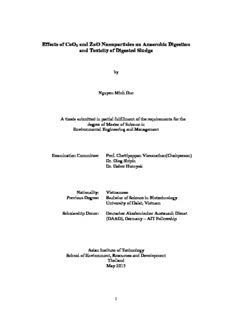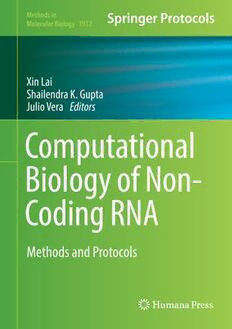
Computational Biology of Non-Coding RNA: Methods and Protocols PDF
Preview Computational Biology of Non-Coding RNA: Methods and Protocols
Methods in Molecular Biology 1912 Xin Lai Shailendra K. Gupta Julio Vera Editors Computational Biology of Non- Coding RNA Methods and Protocols M M B ETHODS IN OLECULAR IO LO GY SeriesEditor JohnM.Walker School of Lifeand MedicalSciences University ofHertfordshire Hatfield, Hertfordshire,AL109AB,UK Forfurther volumes: http://www.springer.com/series/7651 Computational Biology of Non-Coding RNA Methods and Protocols Edited by Xin Lai Department of Dermatology, Erlangen University Hospital, Erlangen, Germany Shailendra K. Gupta Department of Systems Biology and Bioinformatics, University of Rostock, Rostock, Germany Julio Vera Department of Dermatology, Erlangen University Hospital, Erlangen, Germany Editors XinLai ShailendraK.Gupta DepartmentofDermatology DepartmentofSystemsBiology ErlangenUniversityHospital andBioinformatics Erlangen,Germany UniversityofRostock Rostock,Germany JulioVera DepartmentofDermatology ErlangenUniversityHospital Erlangen,Germany ISSN1064-3745 ISSN1940-6029 (electronic) MethodsinMolecularBiology ISBN978-1-4939-8981-2 ISBN978-1-4939-8982-9 (eBook) https://doi.org/10.1007/978-1-4939-8982-9 LibraryofCongressControlNumber:2018965598 ©SpringerScience+BusinessMedia,LLC,partofSpringerNature2019 Thisworkissubjecttocopyright.AllrightsarereservedbythePublisher,whetherthewholeorpartofthematerialis concerned,specificallytherightsoftranslation,reprinting,reuseofillustrations,recitation,broadcasting,reproduction onmicrofilmsorinanyotherphysicalway,andtransmissionorinformationstorageandretrieval,electronicadaptation, computersoftware,orbysimilarordissimilarmethodologynowknownorhereafterdeveloped. Theuseofgeneraldescriptivenames,registerednames,trademarks,servicemarks,etc.inthispublicationdoesnotimply, evenintheabsenceofaspecificstatement,thatsuchnamesareexemptfromtherelevantprotectivelawsandregulations andthereforefreeforgeneraluse. Thepublisher,theauthors,andtheeditorsaresafetoassumethattheadviceandinformationinthisbookarebelievedto betrueandaccurateatthedateofpublication.Neitherthepublishernortheauthorsortheeditorsgiveawarranty, expressorimplied,withrespecttothematerialcontainedhereinorforanyerrorsoromissionsthatmayhavebeenmade. Thepublisherremainsneutralwithregardtojurisdictionalclaimsinpublishedmapsandinstitutionalaffiliations. This Humana Press imprint is published by the registered company Springer Science+Business Media, LLC, part of SpringerNature. Theregisteredcompanyaddressis:233SpringStreet,NewYork,NY10013,U.S.A. Preface NoncodingRNAs(ncRNAs)haveemergedasamajorclassofregulatorygenesforadiverse rangeofbiologicalfunctions.ncRNAsexerttheireffectinthecontextofcomplexregulatory networks by targeting protein-coding genes, as well as other ncRNAs. Computational methods, such as high-throughput sequencing data analysis, biochemical network recon- struction and analysis, and kinetic modeling, have been applied to provide the functional characterization and annotation of ncRNAs. The aim of this volume is to review current knowledge, novel methods, and open challenges in understanding the regulatory role of ncRNAs in biomedicine. In particular, this volume offers a collection of state-of-the-art methodsincludingtheidentificationofnovelncRNAsandtheir targets,functionalannota- tion,anddiseaseassociationindifferentbiologicalcontexts. The book is divided into five parts: (1) Overview of Disease-Specific ncRNAs, (2) Computational Methods and Workflows for ncRNA Discovery and Annotation Based onHigh-ThroughputSequencingData,(3)BioinformaticsToolsandDatabasesforncRNA Analyses,(4)Network-BasedMethodsforCharacterizingncRNAFunction,and(5)Kinetic Modeling of ncRNA-Mediated Gene Regulation. In the first part, Schulte et al. discuss in detail the current knowledge on the role of regulatory microRNAs (miRNAs) and long ncRNA (lncRNA) in inflammatory and infectious diseases (Chapter 1). In Chapter 2, Logotheti, Marquardt, and Pu¨tzer discuss the cross-talk between p73 and miRNAs in realizingthecancer metastasisphenotype.Thischapteralsohighlightstranslationaloppor- tunitiesandresearchchallengesforthep73/miRNAcancernetworkinthecontextofcancer metastasis. Thesubsequentfivechaptersdescribeexperimentalandcomputationalmethods,work- flows that are useful for identification and functional annotation of circular RNAs (cir- cRNAs), lncRNAs, and miRNAs. In Chapter 3, Sharma et al. describe software and workflows to identify circRNAs from RNA sequencing (RNA-seq) data as well as a step- by-step procedure to experimentally validate in silico identified circRNAs. Chapter 4 by Mathew et al. presents methods and pipelines for the discovery of novel lncRNAs from RNA-seq data of zebrafish. In Chapter 5, Wolfien et al. review and discuss state-of-the-art experimental and computational workflows for the identification and characterization of ncRNAs, and they emphasize the use of transcriptome-wide association studies, molecular network analyses, and artificial intelligence-guided predictions. They also propose a promising strategy for developing reproducible and sharable computational workflows for the study of ncRNAs using RNA-seq data. In Chapter 6, Nigita et al. review methods and resourcesforgenome-widedetectionofRNAeditinginncRNAsanddiscussthefeaturesof ncRNA editing associated with their function as well as with the onset of human diseases. Finally, Demirci, Yousef, and Allmer present computational methodologies allowing the identification and validation of functional miRNA-mRNA interactions and discuss key pointsforinvestigatingmiRNAsasbiomarkersofhumandiseases(Chapter7). ThenextthreechapterspresentbioinformaticstoolsanddatabasesforncRNAanalyses. In Chapter 8, Bagnacani et al. present a strategy that makes use of community effort to develop sharable and reusable computational workflows using the Galaxy platform. The conceptisexemplifiedwithadatabasefor theidentificationandcharacterizationofcooper- ative miRNA regulation of gene expression. In Chapter 9, Monga and Kumar provide a v vi Preface comprehensive review of in silico miRNA resources and databases. They present tools for miRNA annotation, miRNA-disease association and identification and characterization of miRNA variants. In Chapter 10, Maracaja-Coutinho et al. present an up-to-date review about229databasesrelatedwithncRNAresearchwithparticularemphasisonbiomedicine, including ncRNA databases for cancer, cardiovascular, nervous systems, pathogens, and otherdiseases. Chapters11–13highlightnetwork-basedmethodsforcharacterizingncRNAfunctions. In Chapter 11, Nacher and Akutsu review the current research on network controllability methods.TheauthorsalsopresentatripartitenetworkmodelincludingncRNA-targetand protein-disease layers and analyze the network with controllability methods to identify the subsetofcriticalcontrolncRNAsassociatedwithhumandiseases.PiroandMarsicosumma- rize recent developments in lncRNA function prediction and lncRNA-disease associations using methods based on network analysis and competing endogenous RNAs (ceRNAs) function prediction (Chapter 12). Paul presents a mutual information-based Maximum- RelevanceMaximum-SignificancealgorithmtoidentifymiRNA-mRNAregulatorymodules frominteractionnetworksinacasestudyongynecologiccancer(Chapter13). The last four chapters of this book showcase the use of kinetic modeling for providing quantitative understanding about mechanisms of ncRNA-mediated regulation of gene expression. In Chapter 14, Bocci et al. review and discuss kinetic models that investigate the ability of miRNA-mediated feedback loops in provoking bistability in gene expression. They link this phenomenon with the switch of cellular phenotypes and the control of intrinsic and extrinsic signaling noise. In Chapter 15, Martirosyan et al. review kinetic models that describe competition and depletion of shared miRNAs by ceRNAs, showing the importance of ceRNA effect in processing gene expression noise. In Chapter 16, Tian et al. demonstrated the use of kinetic modeling to explain the emerging properties asso- ciatedwithmiRNA-mRNAreciprocalregulationandshowthatsuchregulationcanleadto bistableswitchesingeneexpressiondirectingcellfatedecision.Inthelastchapter,Rabajante andRosariodiscussmathematicalmodelingframeworksforstudyinglncRNAregulationof the mammalian cell cycle. They also present a model of ordinary differential equations to simulateandanalyzecellcycleregulationinresponsetoDNAdamage. Takentogether,allchapterspresentedinthisbookprovideastate-of-the-artcollection ofcomputational methods and approaches that willbeof valueto researchersinterested in thencRNAfield.Computationalbiology-basedmethodsfor theidentificationandanalyses of ncRNAs in the context of biomedicine are rapidly growing with both challenges and opportunities to identify ncRNA biomarkers and to develop ncRNA therapeutics. We believe that this volume is a valuable and useful resource for addressing many of these exciting challenges in ncRNA research and hope it will be of interest to many peers. This book is also dedicated to the loss of Dr. Baltazar D. Aguda who has made numerous and important contribution to improve our understanding of ncRNA-mediated regulation of geneexpressionusingmathematicalmodels. Erlangen,Germany XinLai Rostock,Germany ShailendraK.Gupta Erlangen,Germany JulioVera Contents Preface ..................................................................... v Contributors................................................................. ix PART I OVERVIEW OF DISEASE-SPECIFIC NCRNAS 1 ncRNAsinInflammatoryandInfectiousDiseases........................... 3 LeonN.Schulte,WilhelmBertrams,ChristinaStielow, andBerndSchmeck 2 p73-GovernedmiRNANetworks:TranslatingBioinformatics ApproachestoTherapeuticSolutionsforCancerMetastasis.................. 33 StellaLogotheti,StephanMarquardt,andBrigitteM.Pu¨tzer PART II COMPUTATIONAL METHODS AND WORKFLOWS FOR NCRNA DISCOVERY AND ANNOTATION BASED ON HIGH-THROUGHPUT SEQUENCING DATA 3 MethodsforAnnotationandValidationofCircularRNAs fromRNAseqData...................................................... 55 DishaSharma,ParasSehgal,JudithHariprakash,SridharSivasubbu, andVinodScaria 4 MethodstoStudyLongNoncodingRNAExpression andDynamicsinZebrafishUsingRNASequencing......................... 77 SamathaMathew,AmbilySivadas,ParasSehgal,KritiKaushik, ShamsudheenK.Vellarikkal,VinodScaria,andSridharSivasubbu 5 WorkflowDevelopmentfor theFunctionalCharacterizationofncRNAs....... 111 MarkusWolfien,DavidLeonBrauer,AndreaBagnacani, andOlafWolkenhauer 6 ncRNAEditing:FunctionalCharacterizationandComputational Resources.............................................................. 133 GiovanniNigita,GioacchinoP.Marceca,LuisaTomasello, RosarioDistefano,FedericaCalore,DarioVeneziano,GiuliaRomano, SergePatrickNana-Sinkam,MarioAcunzo,andCarloM.Croce 7 ComputationalPredictionofFunctionalMicroRNA–mRNA Interactions ............................................................ 175 Mu¨s¸errefDuyguSac¸arDemirci,MalikYousef,andJensAllmer PART III BIOINFORMATICS TOOLS AND DATABASES FOR NCRNA ANALYSES 8 ToolsforUnderstandingmiRNA–mRNAInteractionsforReproducible RNAAnalysis........................................................... 199 AndreaBagnacani,MarkusWolfien,andOlafWolkenhauer vii viii Contents 9 ComputationalResourcesforPredictionandAnalysisofFunctional miRNAandTheirTargetome ............................................ 215 IshaMongaandManojKumar 10 NoncodingRNAsDatabases:CurrentStatusandTrends .................... 251 ViniciusMaracaja-Coutinho,AlexandreRossiPaschoal, Jose´CarlosCaris-Maldonado,PedroVinı´ciusBorges, AlmirJose´Ferreira,andAlanMitchellDurham PART IV NETWORK-BASED METHODS FOR CHARACTERIZING NCRNA FUNCTION 11 ControllabilityMethodsforIdentifyingAssociationsBetween CriticalControlncRNAsandHumanDiseases ............................. 289 JoseC.NacherandTatsuyaAkutsu 12 Network-BasedMethodsandOtherApproachesforPredicting lncRNAFunctionsandDiseaseAssociations ............................... 301 RosarioMichaelPiro andAnnalisaMarsico 13 IntegrationofmiRNAandmRNAExpressionData forUnderstandingEtiologyofGynecologicCancers ........................ 323 SushmitaPaul PART V KINETIC MODELING OF NCRNA-MEDIATED GENE REGULATION 14 QuantitativeCharacteristicofncRNARegulationinGene RegulatoryNetworks.................................................... 341 FedericoBocci,MohitKumarJolly,HerbertLevine, andJose´NelsonOnuchic 15 KineticModellingofCompetitionandDepletionofShared miRNAsbyCompetingEndogenousRNAs................................ 367 AraksMartirosyan,MarcoDelGiudice,ChiaraEnricoBena, AndreaPagnani,CarlaBosia,andAndreaDeMartino 16 ModelingncRNA-MediatedCircuitsinCellFateDecision................... 411 Xiao-JunTian,ManuelaVanegasFerro,andHanahGoetz 17 ModelingLongncRNA-MediatedRegulationintheMammalian CellCycle.............................................................. 427 JomarF.RabajanteandRicardoC.H.delRosario Index ...................................................................... 447 Contributors MARIOACUNZO (cid:1) DivisionofPulmonaryDiseasesandCriticalCareMedicine,Virginia CommonwealthUniversity,Richmond,VA,USA TATSUYAAKUTSU (cid:1) BioinformaticsCenter,InstituteforChemicalResearch,KyotoUniversity, Kyoto,Japan JENS ALLMER (cid:1) AppliedBioinformatics,Bioscience,WageningenUniversity&Research, Wageningen,TheNetherlands ANDREA BAGNACANI (cid:1) DepartmentofSystemsBiologyandBioinformatics, Institute ofComputerScience,UniversityofRostock,Rostock,Germany CHIARAENRICO BENA (cid:1) DISAT,PolitecnicodiTorino,Turin,Italy;ItalianInstitutefor GenomicMedicine,Turin,Italy WILHELMBERTRAMS (cid:1) InstituteforLungResearch,UniversitiesofGiessenandMarburg LungCenter,MemberoftheGermanCenterforLungResearch(DZL),Philipps-University Marburg,Marburg,Germany FEDERICO BOCCI (cid:1) Center forTheoreticalBiologicalPhysics,RiceUniversity,Houston,TX, USA;DepartmentofChemistry,RiceUniversity,Houston,TX,USA PEDRO VINI´CIUSBORGES (cid:1) DepartmentofComputerScience,BioinformaticsGraduation Program(PPGBIOINFO),FederalUniversityofTechnology—Parana´,Corne´lioProc(cid:1)opio, Brazil CARLABOSIA (cid:1) DISAT,PolitecnicodiTorino,Turin,Italy;ItalianInstituteforGenomic Medicine,Turin,Italy DAVIDLEONBRAUER (cid:1) DepartmentofSystemsBiologyandBioinformatics,Institute ofComputerScience,UniversityofRostock,Rostock,Germany FEDERICA CALORE (cid:1) DepartmentofCancerBiologyandGenetics,ComprehensiveCancer Center,TheOhioStateUniversity,Columbus,OH,USA JOSE´ CARLOSCARIS-MALDONADO (cid:1) AdvancedCenter forChronicDiseases—ACCDiS, FacultaddeCienciasQuı´micasyFarmace´uticas,UniversidaddeChile,Santiago,Chile CARLOM.CROCE (cid:1) DepartmentofCancerBiologyandGenetics,ComprehensiveCancer Center,TheOhioStateUniversity,Columbus,OH,USA ROSARIODISTEFANO (cid:1) DepartmentofCancerBiologyandGenetics,ComprehensiveCancer Center,TheOhioStateUniversity,Columbus,OH,USA ALANMITCHELLDURHAM (cid:1) ComputerScienceDepartment,InstitutodeMatema´tica eEstatı´stica,UniversidadedeSa˜oPaulo,Sa˜oPaulo,Brazil ALMIRJOSE´ FERREIRA (cid:1) ComputerScienceDepartment,InstitutodeMatema´ticaeEstatı´stica, UniversidadedeSa˜oPaulo,Sa˜oPaulo,Brazil MARCODELGIUDICE (cid:1) DISAT,PolitecnicodiTorino,Turin,Italy;ItalianInstitutefor GenomicMedicine,Turin,Italy HANAHGOETZ (cid:1) SchoolofBiologicalandHealthSystemsEngineering,ArizonaState University,Tempe,AZ,USA JUDITHHARIPRAKASH (cid:1) G.N.RamachandranKnowledgeCenter forBioinformatics,CSIR InstituteofGenomicsandIntegrativeBiology(CSIR-IGIB),Delhi,India MOHITKUMARJOLLY (cid:1) Center forTheoreticalBiologicalPhysics,RiceUniversity,Houston, TX,USA ix x Contributors KRITIKAUSHIK (cid:1) GenomicsandMolecularMedicine,CSIRInstituteofGenomicsand IntegrativeBiology(CSIR-IGIB),Delhi,India;AcademyofScientificandInnovative Research(AcSIR),NewDelhi,India MANOJKUMAR (cid:1) BioinformaticsCentre,InstituteofMicrobialTechnology,Council ofScientificandIndustrialResearch,Chandigarh,India HERBERTLEVINE (cid:1) Center forTheoreticalBiologicalPhysics,RiceUniversity,Houston,TX, USA;DepartmentofChemistry,RiceUniversity,Houston,TX,USA;Department ofBioengineering,RiceUniversity,Houston,TX,USA;DepartmentofPhysicsand Astronomy,RiceUniversity,Houston,TX,USA STELLA LOGOTHETI (cid:1) InstituteofExperimentalGeneTherapyandCancerResearch,Rostock UniversityMedicalCenter,Rostock,Germany VINICIUS MARACAJA-COUTINHO (cid:1) AdvancedCenter forChronicDiseases—ACCDiS, FacultaddeCienciasQuı´micasyFarmace´uticas,UniversidaddeChile,Santiago,Chile GIOACCHINOP.MARCECA (cid:1) DepartmentofCancerBiologyandGenetics,Comprehensive CancerCenter,TheOhioStateUniversity,Columbus,OH,USA;DepartmentofClinical andExperimentalMedicine,UniversityofCatania,Catania,CT,Italy STEPHANMARQUARDT (cid:1) InstituteofExperimentalGeneTherapyandCancerResearch, RostockUniversityMedicalCenter,Rostock,Germany ANNALISAMARSICO (cid:1) Max-Planck-Institutfu¨r molekulareGenetik,Berlin,Germany; Institutfu¨rInformatik,FreieUniversita€tBerlin,Berlin,Germany ANDREADEMARTINO (cid:1) Soft&LivingMatterLab,CNR-NANOTEC,Rome,Italy;Italian InstituteforGenomicMedicine,Turin,Italy ARAKSMARTIROSYAN (cid:1) LaboratoryofGliaBiology,VIB-KULeuvenCenter forBrainand DiseaseResearch,Leuven,Belgium;KULeuvenDepartmentofNeuroscience,Leuven, Belgium SAMATHAMATHEW (cid:1) GenomicsandMolecularMedicine,CSIRInstituteofGenomicsand IntegrativeBiology(CSIR-IGIB),Delhi,India;AcademyofScientificandInnovative Research(AcSIR),NewDelhi,India ISHAMONGA (cid:1) BioinformaticsCentre,InstituteofMicrobialTechnology,CouncilofScientific andIndustrialResearch,Chandigarh,India JOSEC.NACHER (cid:1) FacultyofScience,DepartmentofInformationScience,TohoUniversity, Chiba,Japan SERGEPATRICKNANA-SINKAM (cid:1) DivisionofPulmonaryDiseasesandCriticalCareMedicine, VirginiaCommonwealthUniversity,Richmond,VA,USA GIOVANNI NIGITA (cid:1) DepartmentofCancerBiologyandGenetics,ComprehensiveCancer Center,TheOhioStateUniversity,Columbus,OH,USA JOSE´ NELSONONUCHIC (cid:1) CenterforTheoreticalBiologicalPhysics,RiceUniversity,Houston, TX,USA;DepartmentofChemistry,RiceUniversity,Houston,TX,USA;Department ofPhysicsandAstronomy,RiceUniversity,Houston,TX,USA;DepartmentofBiosciences, RiceUniversity,Houston,TX,USA ANDREAPAGNANI (cid:1) DISAT,PolitecnicodiTorino,Turin,Italy;ItalianInstituteforGenomic Medicine,Turin,Italy ALEXANDREROSSIPASCHOAL (cid:1) DepartmentofComputerScience,BioinformaticsGraduation Program(PPGBIOINFO),FederalUniversityofTechnology—Parana´,Corne´lioProc(cid:1)opio, Brazil SUSHMITAPAUL (cid:1) DepartmentofBioscience&Bioengineering,IndianInstituteofTechnology Jodhpur,Jodhpur,Rajasthan,India
The list of books you might like

Mind Management, Not Time Management

Do Epic Shit

A Thousand Boy Kisses

Shatter Me Complete Collection (Shatter Me; Destroy Me; Unravel Me; Fracture Me; Ignite Me)

Negro zine 2 (2006 Apr)

COMESA 235-2: Leather - Physical and mechanical tests - Determination of tear load - Part 2: Double edge tear

Greek Government Gazette: Part 2, 2006 no. 1777
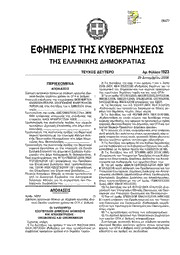
Greek Government Gazette: Part 2, 2006 no. 1923
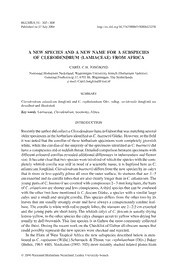
A new species and a new name for a subspecies of Clerodendrum (Lamiaceae) from Africa

O Drama da Bretanha
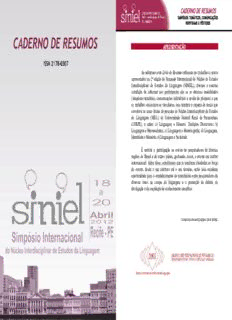
caderno de resumos caderno de resumos
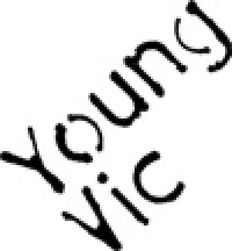
Sus
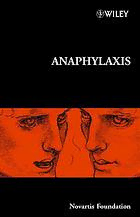
Anaphylaxis
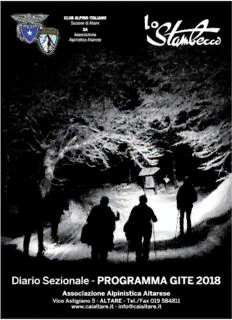
cai altare 2018 libretto

Yuki-Onna-ffnet 11885721

Constraining large scale HI bias using redshifted 21-cm signal from the post-reionization epoch

Hadronic dissipative effects on elliptic flow in ultrarelativistic heavy-ion collisions

Black Tales for White Children by Stigand C H
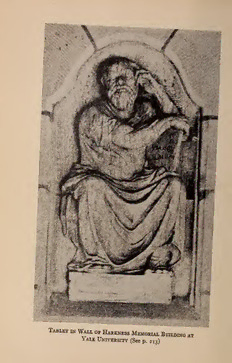
THE DELPHIC MAXIMS IN LITERATURE
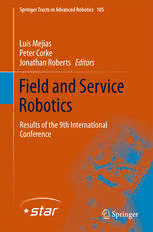
Field and Service Robotics: Results of the 9th International Conference



